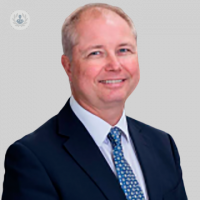Biological tendon repair: Expert insight
Written in association with:In this informative guide from revered consultant orthopaedic surgeon Mr Andrew Chambler, we hear how tendon injuries typically occur and the benefits of biological treatment modalities for tendon repair. The leading specialist also reveals which are the most effective types of biological materials and how they are utilised in treatment of this type.

How do tendon injuries commonly occur?
Tendon injuries commonly occur by two mechanisms; through a traumatic event, such as a sports injury or a fall at work or in the home, or as a result of ageing, where we slowly begin to wear out our tendons as we get older and they start to fray and eventually tear.
What are the different options available to repair a tendon?
The different options in terms of tendon repair are very varied. Some tendons don't actually need to be repaired and the other parts of the body around them can compensate. In other cases, however, the tendon is repaired back onto the bone with various strategies using bone anchors and sutures, either through a keyhole (minimally invasive) technique or with an open operation.
Who is a suitable candidate for biological tendon repairs?
The candidates that are suitable for biological tendon repair tend to be patients of a younger age group as we know that as we get older, our tendons and our bodies can't heal as well and don't have the mechanisms to do so. However, in potentially every tendon repair case, biologics could be used to help get a successful outcome.
How are biological materials used in the tendon repair process?
Biological materials for tendon repair tend to be used in two ways. One way is to try and induce the tendon itself to heal, or to form new tendon like substance to give structure. The second way is to have materials that take the place of tendons in terms of bridging defects or replacing tendons entirely that have that have been torn away and are irreparable.
Which biological materials are best for tendon repairs?
The best biological materials are ones that don't harm or affect the patient and are inert, which most are. The best materials are also those which are able to help to biologically induce the patient’s own tendons to heal, as well as supporting these tendons in a structured way to allow them to have a successful healing outcome.
What benefits do biological materials offer for tendon repairs?
The advantage of having a biological tendon repair is that you are using your own tissues to help your body to heal. We have also seen that patients’ recovery time following surgical procedures is reduced and that they are back to their work, normal lifestyles and recreational pursuits sooner than with a simple standard structural repair.
If you wish to schedule a consultation with Mr Chambler, you can do so by visiting his Top Doctors profile.


